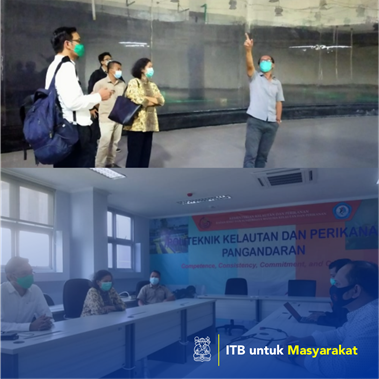

Ivonne Milichristi Radjawane
Coastal abrasion problems are one of the definition of disaster Law No. 24/2007 because it damages coastal facilities and infrastructure facilities and results in a considerable loss. West Coast Pangandaran Subdistrict has undergone abrasion namely coastal erosion almost more than 200 m (People's Mind, 2013) and the Batukaras tourist beach area, Cijulang sub-district has experienced a four kilometer abrasion and a width of 12 meters. As a result of the abrasion of coastal erosion it has caused the decline of the coastline that can Threatens the lives and livelihoods of coastal communities (Wahyudi, et al. 2009). Abrasion What happened in the Pangandaran regency area was mainly due to natural factors like bad weather that causes high waves and the absence of waves (People's hope, 2015). Climate change triggers increased extreme weather activity and high wave. Non-natural factors such as the transfer of land function and mangrove area reduction Play the role of accelerating coastal damage. Public awareness is one of the main factors in disaster risk reduction effective. Absolute society and must be actively involved in facing disasters (Hidayati, 2008). Educoast modules are arranged in a simple language that refers to Material of the National Disaster Management Agency (BNPB) and designed for activities effective for 5 days including practice coordinating with the regency government Pangandaran. The interactive module target is high school teachers and students in Pangandaran who was invited to observe, find, and measure beach abrasion. Then rehabilitate through mangrove planting and make protection Beach with coconut fibers (prosapa).
Application of Writing, Implementation of Social Concern Activities in the form of education / counseling / mentoring
Geographically, Pangandaran has 91 km of coastline overlooking the ocean Hindia (Pangandaran Regional Government, 2012). The Indian Ocean in the southern hemisphere is an open ocean which is strongly influenced by the wind as a wave generation. The highest wave averages in Pangandaran reach 1.46 meters (Rizal AM, 2017) are potentially Cause beach abrasion. On the other hand, the cyclone storm can also arouse waves storm or storm surge that will soak and erode the beach like a storm jacob year 2006 which flooded the west coast of Pangandaran District as deep as 0.74 meters (Ningsih NS et al, 2007). The Pangandaran tourism sector, which is the majority located on the coast, will certainly be affected by abrasion. It also threatens the lives of people living closely with the coastline. In an abrasion zoning study by ITB Oceanography in 2017, the majority of Pangandaran coastal experienced abrasion. Therefore, local people need to know how to measure and deal with the abrasion.